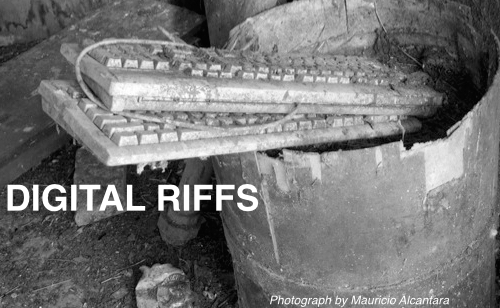King's College London has the unfortunate distinction of having given away Charles Babbage's Difference Engine. The scientific instrument collections formed by George III and kept at Kew were presented to King's College in 1841 and displayed in the George III Museum in the Strand building, opened by Prince Albert in 1843. The displays also included the Difference Engine built by Babbage with government support in order to calculate the mathematical table required for navigation and other purposes. Sadly, King's decided it no longer wanted Babbage's machine twenty years later, which is why it is now on display in the Science Museum in South Kensington. The story is told by Babbage as follows:
Charles Babbage, Passages from the Life of a Philosopher, ed. Martin Campbell-Kelly (London: Pickering and Chatto, 1994)
p. 73n: 'The part of the Difference Engine already constructed, together with all the Drawings relating to the whole machine, were, in January 1843 (by the direction of the Government), deposited in the Museum of King's College London.
p. 111: Circumstances Connected with the exhibition of the Difference Engine No. 1 in the International Exhibition of 1862
When the construction of Difference Engine No. 1 was abandoned by the Government in 1842, I was consulted respecting the place in which it should be deposited. Well aware of the unrivalled perfection of its workmanship, and conscious that it formed the first great step towards reducing the whole science of number to the absolute conrrol of mechanism, I wished it to be placed whereer the greatest number of persons could see it daily.
With this view, I advised that it should be placed in one of the much-frequented rooms of the British Museum. Another locality was, however, assigned to it, and it was confided by the Government to the care of King's College, Somerset House. It remained in safe custody within its glass case in the museum of that body for twenty years. It is remarkable that during that long period no person should have studied its structure, and, by explaining its nature and use, have acquired an amount of celebrity which the singularity of knowledge would undoubtedly have produced.
The college authorities did justice to their charge. They put it in the place of honour, in the centre of their museum, and would, no doubt, have given facilities to any of their members or to otyer persons who might have wished to study it.
But the system quietly pursued by the Government of ignoring the existence of the Difference Engine and its inventor doubtlessly exercised its deadening influence on those who were inclined, by taste or acquirements, to take such a course.
pp. 113-4: The appearance of the finished portion of the unfinished Difference Engine No. 1 at the Exhibition of 1862 is entirely due to Mr [William] Gravatt [a civil engineer who worked with Brunel]. That gentleman had a few years before paid great attention to the Swedish calculating engine of M. Scheutz, and was the main cause of its success in this country.
Being satisfied that it was possible to calculate and print all tables by machinery, Mr Gravatt became convinced that the time must arrive when no tables would ever be calculated or printed except by machines. He felt it was of great importance to accelerate the arrival of that period, more especially as numerical tables, which are at present the most expensive kind of printing, would then become the cheapest.
In furtherance of this idea, Mr Gravatt wrote to Dr [Richard William] Jelf, the Principal of King's College, Somerset House, to suggest that the Difference Engine of Mr Babbage, which had for so many years occupied a prominent place in the museum, should be exhibited in the International Exhibition of 1862. He at the same time offered his assistance in the removal and reinstatement of that instrument.
The authorities of the college readily acceded to this plan. On further enquiry, it appeared that the Difference Engine belonged to the Government, and was only deposited with the college. It was then found necessary to make an application to the Treasury for permission to exhibit it, which was accordingly done by the proper authorities.
p. 115 On Mr Gravatt applying to the commissioners [of the Exhibition] for space, it s stated that the engine must be placed amongst the philosophical instruments, Class XIII.
The only place offered for its reception was a small hole, 4 feet 4 inches in front by 5 feet deep. On one side of this was the only passage to the office of the superintendent of the class. The opposite side was occupied by a glass case in which placed specimens of the separate parts of the unfinished engine ... The public at first flocked to see it; but it was so placed that only three persons could conveniently see it at the same time. When Mr Gravatt kindly explained and set it in motion, he was continually interrupted by the necessity of moving sway in ordr to allow access to the very numerous persons whose business called them to the superintendent's office.
p. 125: After the close of the exhibition, Mr Gravatt and myself attended to prepare the Difference Engine for its return to the museum of King's College. To our great astonishment, we found that it had already been removed to the museum at South Kensington. Not only the Difference Engine itself, but also the illustrations and all the unfinished portions of exquisite workmanship which I had lent to the Exhibition for irs explanation, were gone.
On Mr Gravatt applying to the Board of Works, it was stated that the Difference Engine itself had been placed in the Kensington Museum because the authorities of King's College had declined receiving it, and immediate instructions were of course given for the restoration of my own property.






